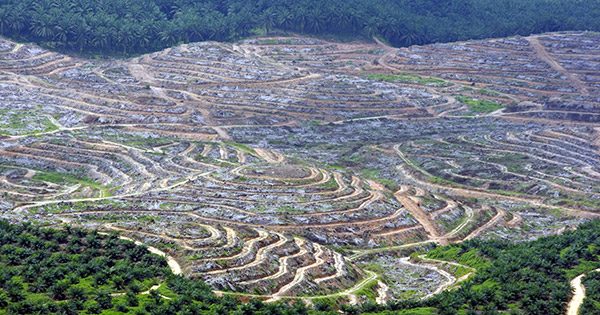SUMMARY
This is AI generated summarization, which may have errors. For context, always refer to the full article.

JAKARTA, Indonesia – Southeast Asia’s booming palm oil industry is facing a double blow from a recent drought and a possible El Niño weather phenomenon later this year, with analysts warning a production shortfall could spark a jump in consumer goods prices.
From biscuits to shampoo and make-up, the oil has become a key ingredient in numerous products found on supermarket shelves across the globe, fuelling rapid growth of the industry in the world’s top two producers, Indonesia and Malaysia.
But a drought in January and February in the countries, which provide some 85% of the world’s palm oil and are home to vast plantations where swathes of rainforest used to stand, has raised the prospect of a drop in production later this year.
Dry weather does not have an immediate effect on the fruit, which needs to be deprived of water for some months before any impact is noticeable.
While palm oil prices have risen slightly in recent months in Indonesia, the country’s Palm Oil Association put it down to other factors, and industry observers predicted the drought’s impact would start to be felt later in 2014.
Consumer price rises likely
“We are likely to see the effects starting in September to October, and in terms of production, we are likely to see a double-digit percentage drop in Indonesia and Malaysia,” said Tan Chee Tat, a Singapore-based investment analyst at Philip Futures whose work has focused on palm oil.
“There is a high likelihood companies will pass on the price rise to consumers.”
Another threat could come hot on the heels of this year’s dry weather – forecasters are predicting an El Niño weather phenomenon later this year, which could spark another drought that will hit production in 2015.
The Australian Bureau of Meteorology issued an El Niño alert this week, warning the likelihood of the weather pattern developing was at least 70%, and it could appear as early as July.
This follows recent warnings from other weather agencies there is a good chance of an El Niño.
El Niño, which develops every 2 to 7 years, occurs when water warms around Indonesia, shifts eastwards and rises to the surface in the eastern Pacific.
The warming water changes wind patterns and draws rain and thunderstorms towards South America and away from countries in the western Pacific.
Billions of dollars in damage
It typically brings floods to usually arid countries in western South America and drought to Indonesia and other countries in the region.
If this year’s El Niño is as strong as the 20th century’s worst in 1997-98, which was blamed for tens of thousands of deaths and billions of dollars in damage, it could wreak havoc on palm oil crops, analysts fear.
Fadhil Hasan, executive director of the Indonesian Palm Oil Association, said that production was hit in 2008 following an El Niño, and prices rose to $1,200 a ton. They are currently at around $930 a ton.
However he said that other factors, such as market speculation, may have also contributed to the rise.
Alan Lim, a palm oil plantation analyst from Kenanga Investment Bank in Malaysia, said that “in the worst case scenario” an El Niño could cause a 30% dip in production in the top two producers.
He said production would be hit some 6 to 12 months after El Niño, meaning in 2015.
Observers also warn a steep rise in palm oil prices could boost alternative products, especially soybean oil, which is mainly grown in the United States and Brazil.
Despite the growing concerns, some industry players and analysts downplayed the dangers and were optimistic that palm oil would stay ahead of its competitors even during a sustained period of drought.
It is the highest-yielding vegetable oil crop and needs less than half the land required by other crops, such as soybean, according to the Roundtable on Sustainable Palm Oil, an organisation established to promote sustainable use and growth of the commodity.
This makes palm oil, extracted from a cherry-sized fruit that grows in bunches on trees, the cheapest vegetable oil in the world.
Indonesia’s climate agency also played down the possibility an El Niño would hit the country’s main plantation areas, on western Sumatra island and the country’s portion of Borneo island.
A greater source of pressure on the industry may remain sustained campaigns from green groups, who are calling for palm oil to be produced in a sustainable fashion that does not destroy any more rainforest.
“The question is not whether more or less palm oil is produced, but how it is produced,” said Bustar Maitar, head of the Indonesia Forest Campaign at Greenpeace International.
“Its production must not destroy forests, drain peatlands or contribute to the very forest fires that are pumping carbon into the atmosphere and across the region,” he added, referring to blazes that are regularly set to clear land for plantations. – Rappler.com
Add a comment
How does this make you feel?
There are no comments yet. Add your comment to start the conversation.